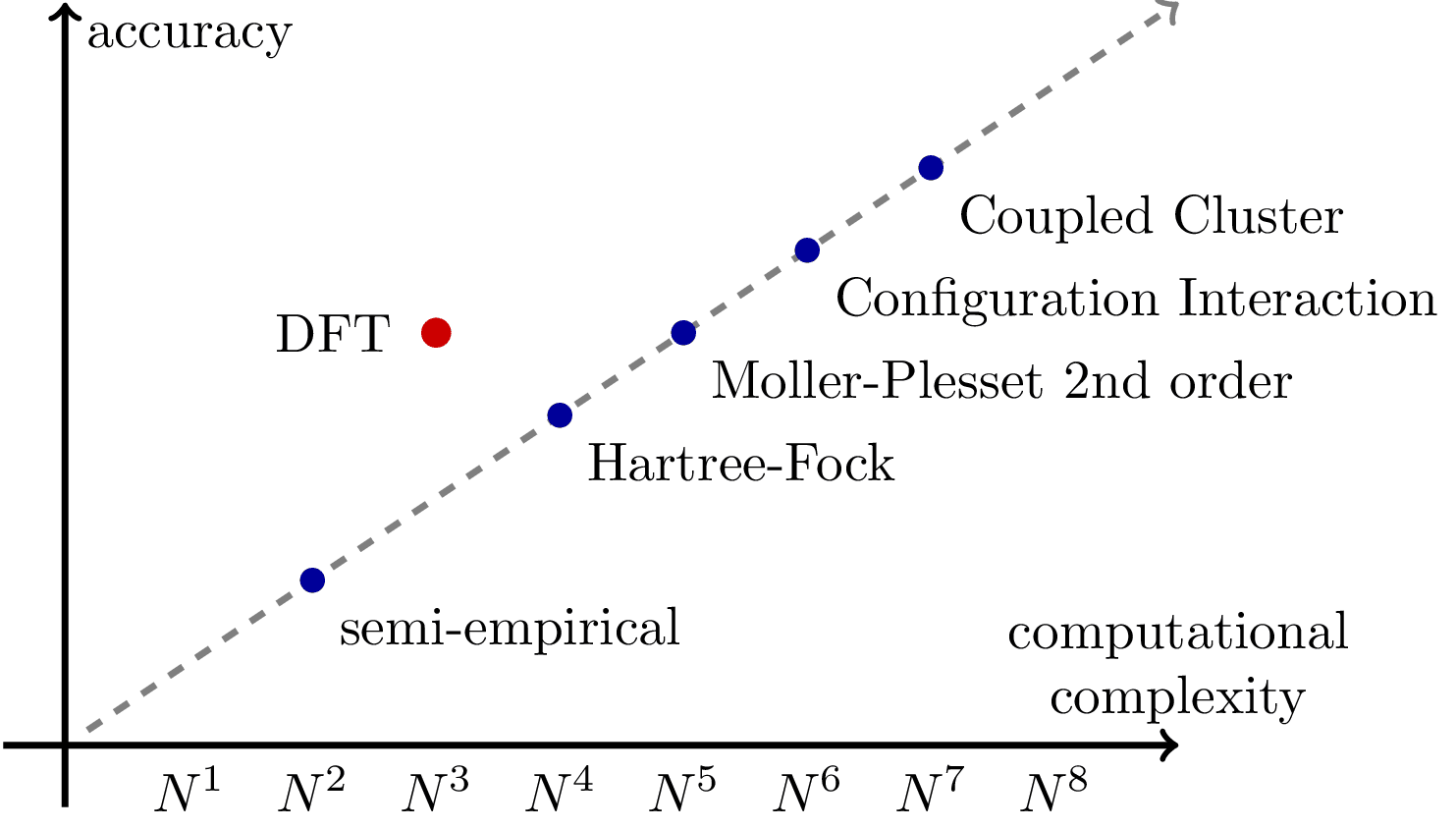Cost vs Accuracy in Quantum Mechanical Simulations
Cost vs accuracy trade-off for different quantum mechanics approximations. $N$ denotes the system size, usually the number of electrons. Source: Frank Noe.

Download
Code
qm-cost-vs-acc.typ (77 lines)
qm-cost-vs-acc.tex (28 lines)